Ker & Downey Africa > Journal > A Safari in Africa
A guide on what to expect on a safari in Africa is an excellent place to start preparing for your trip of a lifetime! Few people ever forget their first safari. In fact, for many, the experience is life-changing. Being so intimately immersed in the wild spaces that have been immortalized on screen and print for centuries, is a dream come true. It is no wonder Africa is a source of inspiration for poets, writers, creatives and… well, almost anyone. Ernest Hemingway put it simply: “I never knew of a morning in Africa when I woke up that I was not happy.”
As your dreams of a safari in Africa start to come to fruition, we have compiled a concise yet thorough guide of what you can expect. This will outline your day-to-day safari itinerary, the role of your safari guide and tracker, the types of wildlife you will encounter, and more.
See you out there!
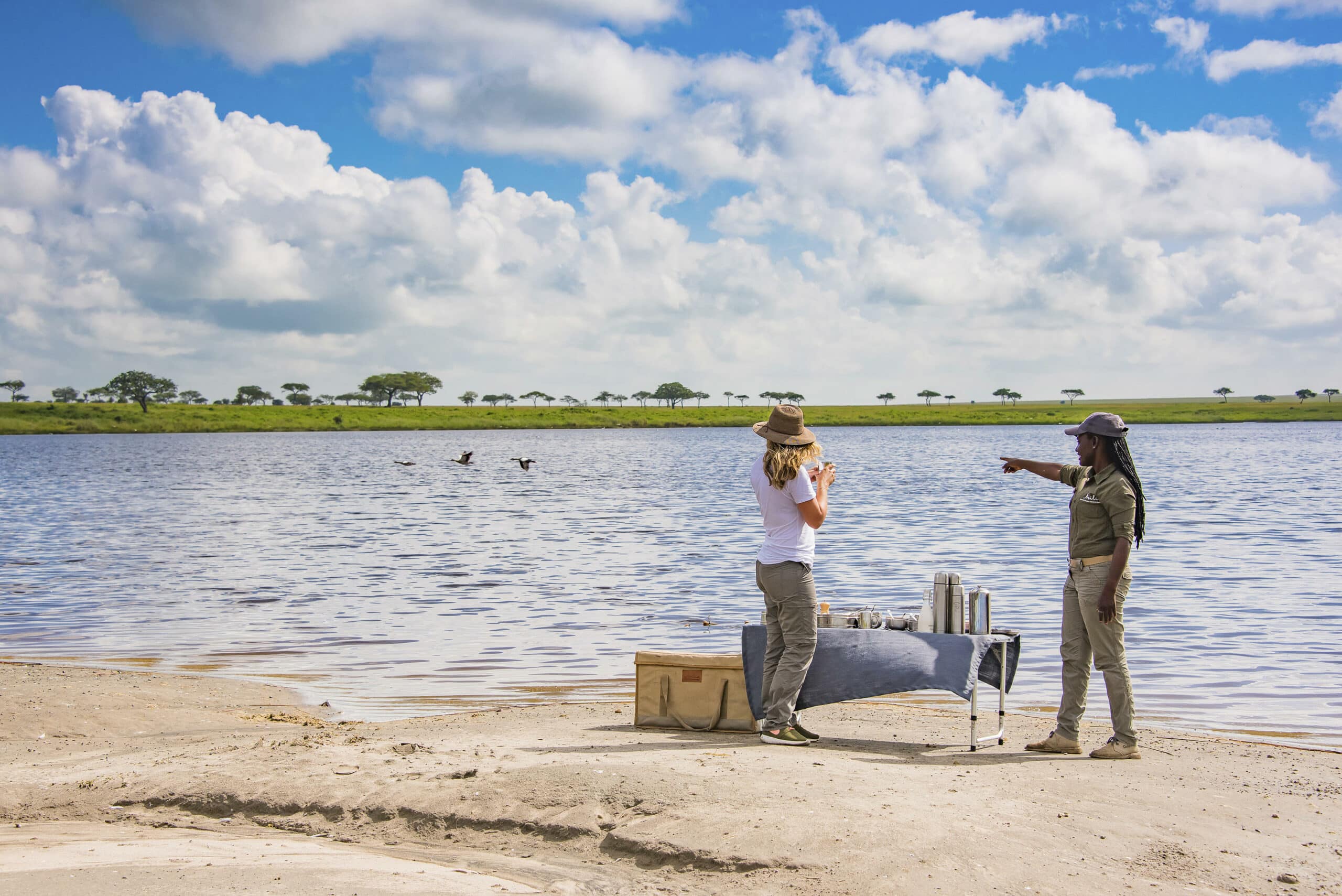
When you arrive at your safari lodge of choice, you will be assigned your own dedicated safari guide and tracker. You will have the same team for the duration of your stay. Your guide and tracker are hugely important parts of your safari and central to the success of your overall experience. Your guide will man the safari vehicle on game drives and educate you on the environment, wildlife, and destination you’re visiting.
![]()
Working hand-in-hand with your safari guide, is the tracker – who can be found sitting on the custom-made seat on the front-left of the safari vehicle. Your tracker has eagle eyes, and has been expertly trained in the art of hunting out obscured wildlife and animal tracks. This is who is responsible for getting you up close and personal with some of the most sought-after wild inhabitants of the bush.
Back at the lodge, you will find a passionate, close-knit and professional team of managers, serving staff, chefs and more. These warm conservation-minded individuals will all contribute to ensuring that each and every guest has an unforgettable African safari experience.
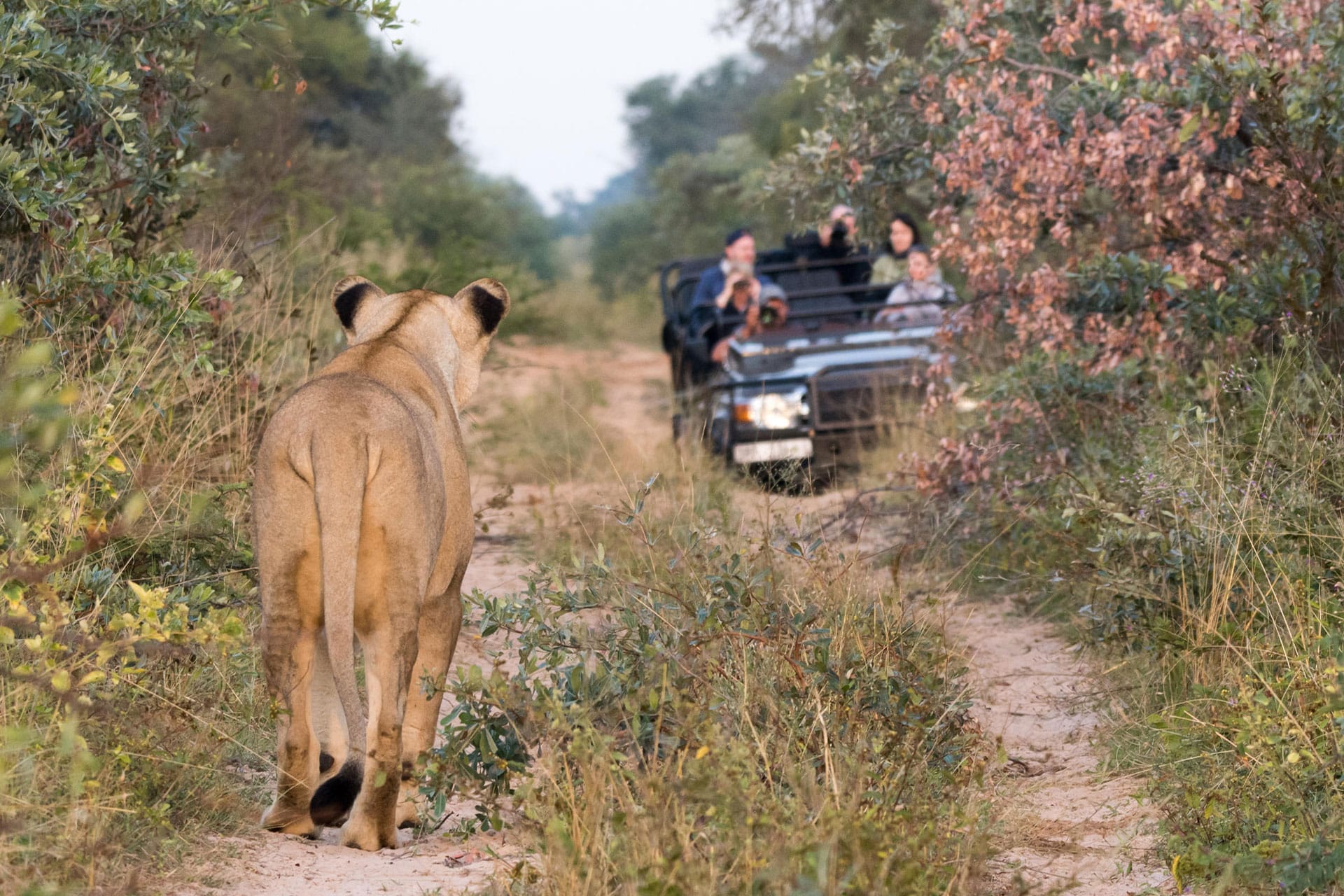
No two safaris are the same and each game drive on your trip is going to provide you with different and unique sightings. It is important to remember that wildlife roams freely in the sizable game reserves. This requires safari trackers to use their expert knowledge to find wildlife by means of tracking their footprints.
Though you might come across big cats fitted with tracking collars occasionally, it is important to note that this is NOT a means to track animals for tourism purposes but an essential part of conservation.
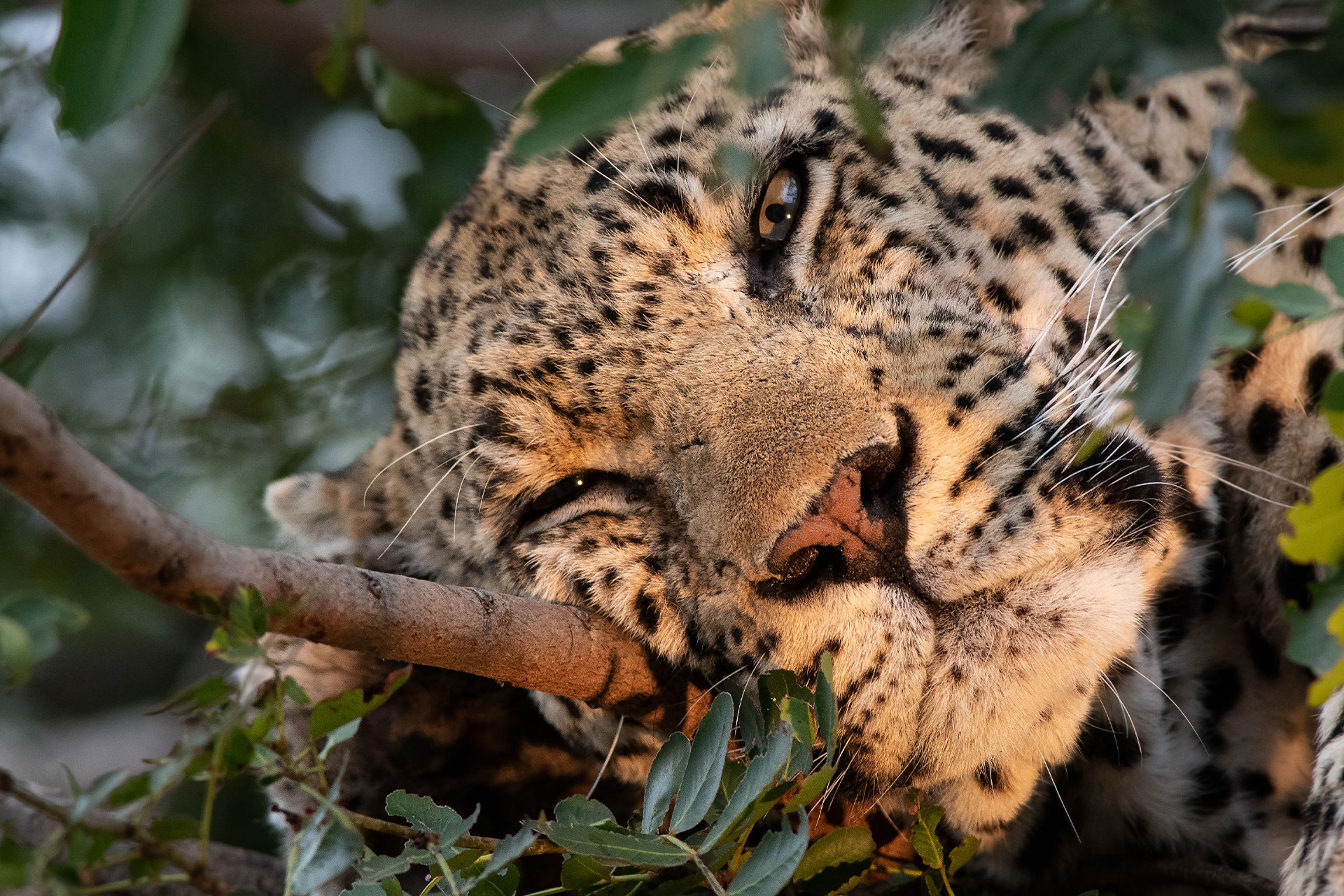
If it’s your first safari in Africa and you want to see the Big Five or any other particular species, chat to your LuxVenture® Designer about selecting a region that will offer a strong chance of encountering these animals. While this may strengthen your chances of seeing them all, there are no guarantees in the wild.
Sightings are dependent on a variety of factors such as seasons, terrain and vegetation, climate, time of day and other uncontrolled factors. Leopard sightings are hard to come by and you can count yourself lucky to have spotted one, particularly during daylight hours as these particularly elusive creatures are, for the most part, nocturnal.

05h30: Rise ‘n shine! You will receive an early morning wake-up call in your room from your safari guide or lodge manager.
05h45: Meet for tea or coffee and a small breakfast snack at the main lodge.
06h00: You will depart for your morning game drive. Blankets will be provided for the crisp morning air. These drives typically take around 3 hours, depending on sightings.
08h15: Stop for coffee and more breakfast treats at a viewing point. Your safari guide and tracker will set up a coffee and tea station for you to enjoy in the bush.
09h00: Arrive at the lodge for your full hot breakfast and buffet.
10h00 – 12h00: Time at leisure. You may want to speak to your guide about conducting a walking safari or other activity during this time.
12h00 – 14h00: Lunch is served at the main lodge.

14h00 – 15h30: Time at leisure. You may want to speak to your guide about conducting a walking safari or other activity during this time.
16h00: Depart for your afternoon game drive. These drives typically take around 3 hours, depending on sightings.
18h15: Stop for sundowners at a viewing point in the bush. Enjoy a selection of drinks and snacks while enjoying the African sunset.
19h00: Arrive at the lodge. Enjoy a drink at the bar followed by dinner. Spend the evening at leisure.
*Times may vary depending on the season in which you are traveling. During the winter months, departure will be slightly later in the morning and earlier in the afternoon.
Whilst your safari guide and tracker will be sure to run through safari protocol before you start, it’s always best to get a headstart on some insights prior to your trip. There are many ethics to be abided by when it comes to your behavior within wildlife territories.
Always follow and respect the guide’s instructions. The guides are experts both in a safari environment and with the animal behavior at hand. They will have the best judgment in any situation and as it is their job to keep you safe, it is imperative that you always follow their instructions.
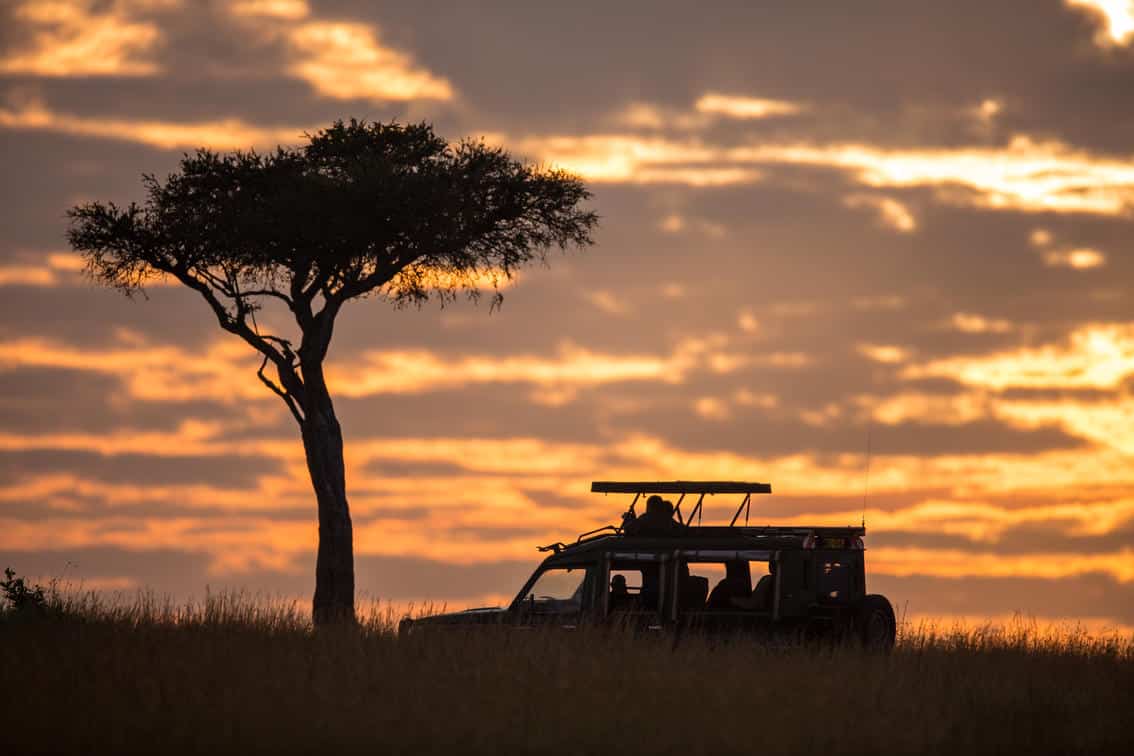
Please note: The safari vehicles for game drives differ in Southern and East Africa.
In Southern Africa, the vehicles are typically open-air on the sides with some having a closed roof to protect you from the sun. These vehicles are usually Land Rovers or Toyota Land Cruisers, designed for varying terrain.
In East Africa, you can expect safari vehicles that are entirely enclosed with pop-up roofs. A large pop-up roof ensures uninterrupted views and great photographic opportunities. In addition, these vehicles often feature raised suspension and engine snorkels for river crossings, their ruggedness means you can access wild and off-the-beaten-track destinations with ease.
*Opting for a private safari vehicle is always an option on prior arrangement and at an additional cost. Electric vehicles are also a nice sustainable option.
No standing or dangling limbs outside the vehicle
Animals can recognize human shapes and figures when standing or breaking the outline of the vehicle. Always stay seated inside the vehicle and keep all limbs in check. Not doing so will provoke the animals, putting everyone at serious risk.
No loud or foreign noises.
Keep noise to a minimum as it disturbs animals and other safari-goers and it generally disturbs the entire wilderness experience. Remember, noise travels a great distance through the wilderness and on the water. Because of this, cellphones are to be turned to flight mode for all game viewing experiences and activities. Making or receiving calls and texts is forbidden and phones may only be used for photos and video.
No headphones allowed.
Headphones are not to be used when on a game drive in case sudden emergency instructions need to be issued by the guide.
![]()
Do not run.
Do not run under any circumstances. Running evokes a chase and you will be pulled down, mauled, or trampled. If an animal becomes hostile, stop and listen to your guide. Never turn your back on the animal. Stay in a group and follow the given instructions accordingly.
Walk in single file.
Always walk in single file at an arm’s length from each other. In doing this, animals will see you as one unit rather than a herd that can be easy to split up.
No loud noises.
Communicate with hand signals, whistles, and whispers. This relates back to noise, don’t shout, scream or generate noise that could render the animals hostile.
Do not smoke or eat, only drink water.
Animals have an incredible sense of smell and will be attracted by something as small as a wrapped candy. Sodas and sweet drinks always lure stinging insects so stick to water. If you do need to eat while on safari (possibly for medical reasons), try to avoid anything with noisy packaging and inform your guide before heading off. Smoking is a fire hazard in the African bush and will pollute the natural environment and disturb the animals.
Limit photography.
Only take photographs with the consent of the guide and then no use of flash is permitted – ideally switch camera sounds off. Animals may run away when they hear the click of the camera, spoiling the sighting for everyone. In addition, the camera flash must always be turned off to avoid aggravating the wildlife. See our top recommended wildlife photography tips.
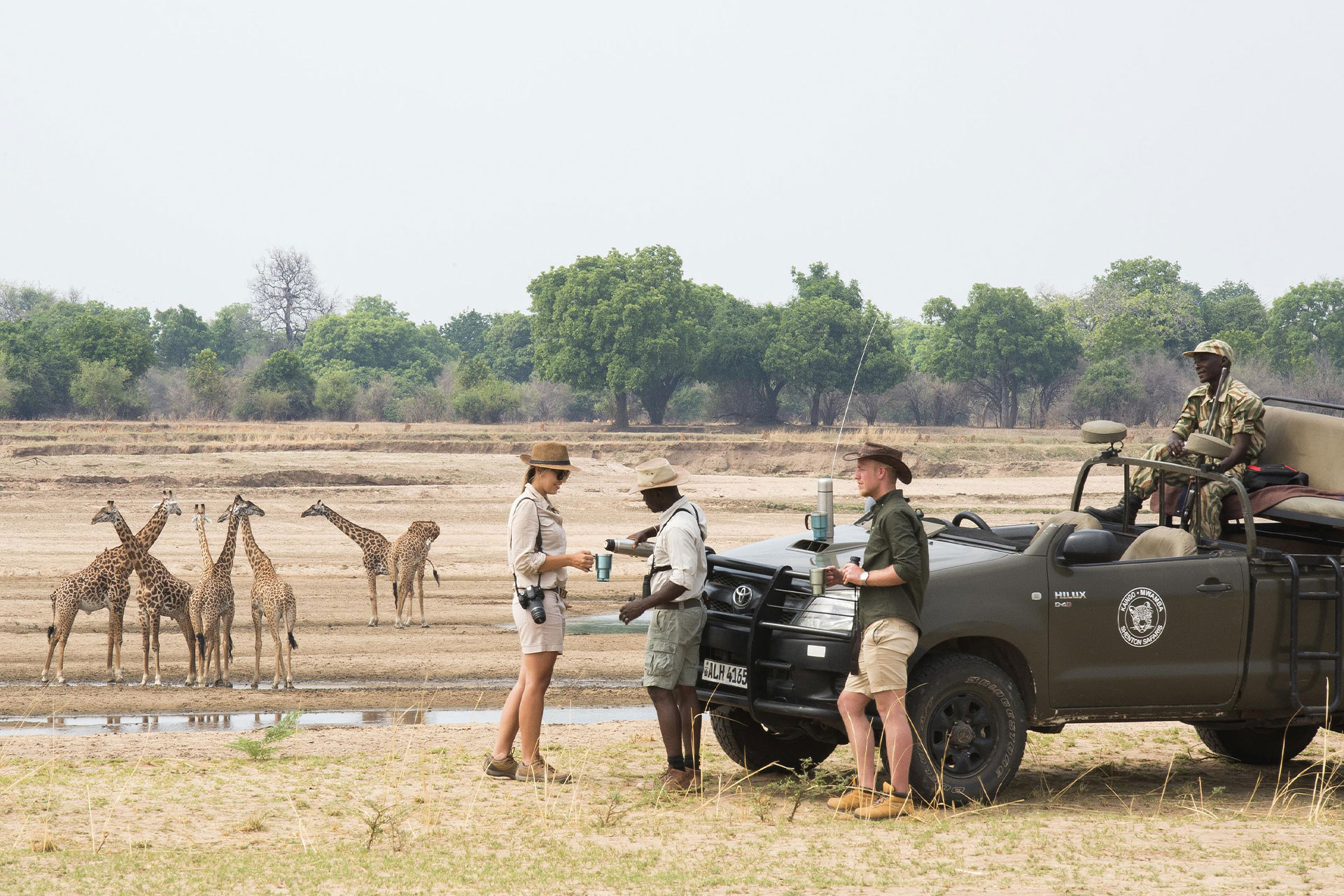
Africa can be temperamental when it comes to weather, and it is not uncommon to have days where you experience all four seasons in one! Summer, winter, rain or shine – the continent has it all and it’s best to be prepared and pack for all elements when it comes to safaris.
Generally, early morning and evening game drives can be quite crisp and cold, while the midday heat can be harsh. Light clothing and layers are recommended and hats sunscreen are absolutely essential to help protect you from the harsh African sun.
![]()
Keep your colours neutral. Studies have shown that the animals are able to recognize certain bright colours and this will affect their behavior. Neutral earthy tones such as khaki, grey and olive will make you less of a target.
Shoes can make or break your safari so we recommend sturdy, comfortable hiking or running shoes – be it for running around the camp or joining in on nature walks, these are a necessity on safari. Another top tip to spot the elusive and low-lying wildlife is of course a pair of binoculars. And don’t forget your cameras!
Part of the safari adventure is undoubtedly the element of surprise that comes with exploring the wildest parts of the planet. However, it is important to brush up on the general safari rules and safety tips before you head off on your trip. Following these guidelines will ensure you get the best out of your safari experience. See you out there!
Head office:
7 Bree Street, 6th Floor, Touchstone House, Cape Town, South Africa
+27 (0)21 201 2484
[email protected]
United Kingdom: Sportsman Farm, St Michaels, Tenterden, Kent
Ker & Downey® Africa is compliant with COVID-19 Industry Protocols.


Head office: 7 Bree Street, 6th Floor, Touchstone House, Cape Town, South Africa
+27 (0)21 201 2484
[email protected]
United Kingdom: Sportsman Farm, St Michaels, Tenterden, Kent
Ker & Downey® Africa is compliant with COVID-19 Industry Protocols.